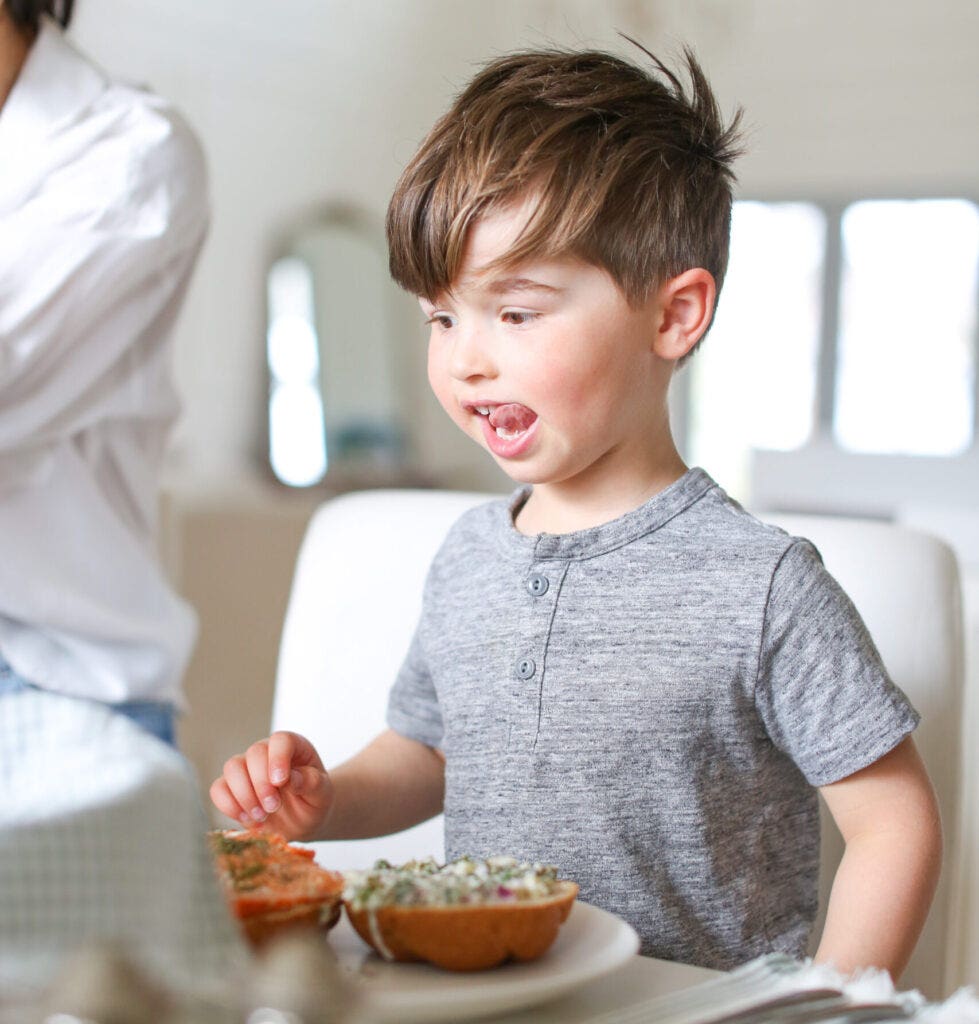Teaching kids positive eating behaviours during childhood helps set them up with healthy eating habits and a positive relationship with food for life. Wondering how you can teach kids about eating healthy in a way that is productive and doesn’t lean into diet culture? Here are 7 tips from a registered dietitian:
1. Avoid labelling foods as good or bad. Foods do not have a moral compass, and all foods can fit. There are foods that do a better job of fueling our bodies to help them grow, and those foods should be chosen most of the time. There are also foods that we eat simply for pleasure, and that is ok too. Pattern over plate: remember that the overall pattern of eating is more important than any individual meal.
2. Do not yuk someone else’s yum. Avoid openly judging other people’s food choices, especially around your children, and encourage them to do the same. Different families and cultures enjoy a variety of foods that a child may not have been exposed to or simply eat foods that are unfamiliar to another child. I still remember the kid who brought a bologna and ketchup sandwich to school each day, and how he used to get teased about it. Not cool. Which leads me to my next point.

3. Foster curiosity. Try, try and try again! Your kids may not like a food the first time they try it, and that is normal. The secret is to keep offering chances to try the food without pressure. As they grow, their taste buds develop and change. Did you know that it can take 8 or more tries before you like a food? Encourage them to think of new foods as foods that they may not like…yet!
4. Adding is better than subtracting. In nutrition it is all too easy to focus on what not to eat. The challenge? We move toward our focus. Instead of harping on the things to avoid, focus on the foods that will best nourish our bodies to help them grow and give us energy to do the things we love. Placing nourishing foods at the centre of their focus will help encourage those foods to be the star of their plates.
5. Get them involved. Safely involve children in meal planning and food preparation. Take them to a grocery store and get them to pick out a new fruit or vegetable they want to try. Get them involved in helping grow a veggie or herb garden in the summer. Ask that they help pick a meal to enjoy once a week and let them help make it. Yes, it may make a mess, and yes, it will take longer. But the payoff is immeasurable. Children are much more likely to want to try something they helped make or grow. Looking for meal ideas kids will love? We have hundreds of kid-friendly, dietitian-approved recipes that are simple to cook in our Fraîche Table meal plan.
6. Be the change you want to see. It’s pretty hard for children to go one way if they see the person they look up to doing something completely opposite. If you want your kids to eat well, start with yourself. What they see you do consistently will always have a greater impact than anything you tell them; including eating the foods you want them to try!
7. Listen to your body. Our bodies will tell us a lot if we are paying attention. This can help prevent disordered eating later in life. Feelings of fullness, hunger or thirst are important messages that our bodies are trying to communicate to us so that we give it what it needs to do its job.

Questions to ask kids to get them curious about nutrition:
1. Why do we eat? What does food do for our body?
2. Where does food come from?
3. Name some foods that do an exceptional job of helping our bodies grow and stay strong. Do you think this is a job for one food, or many foods?
4. Why is it important to eat fruits and vegetables?
5. How do we know how much food to eat (or when to drink water)? How do our bodies communicate with us?

